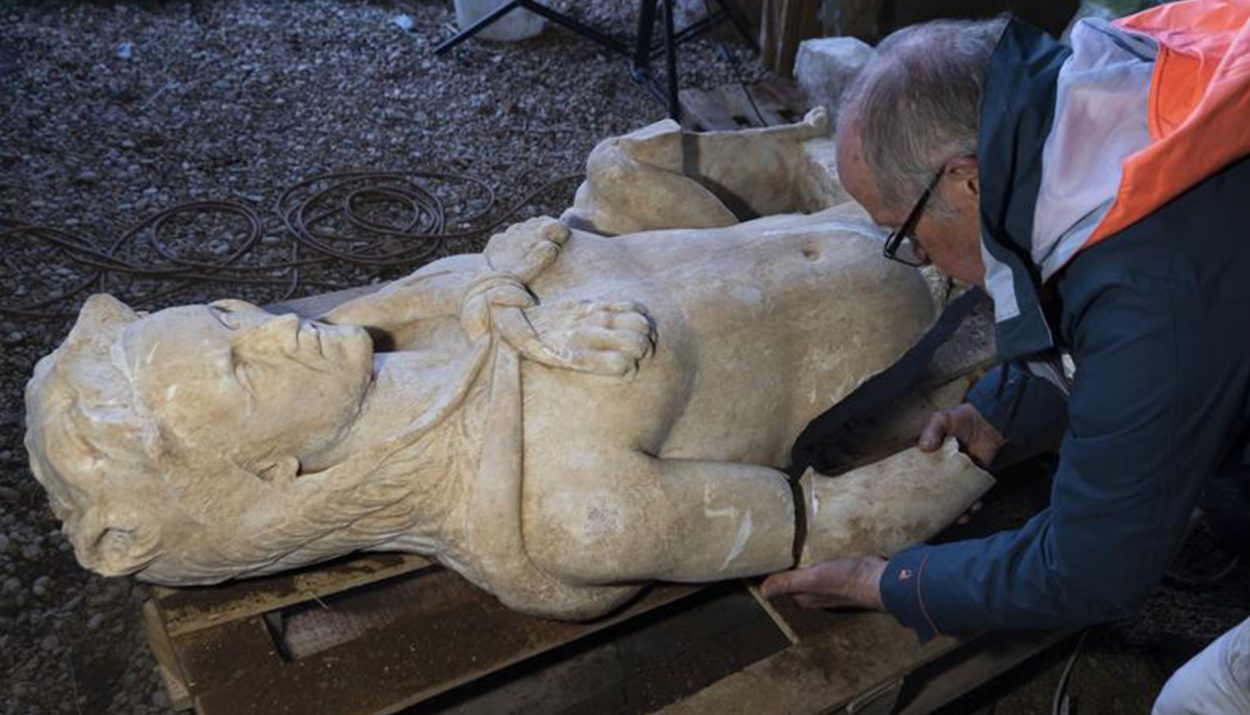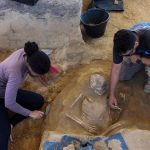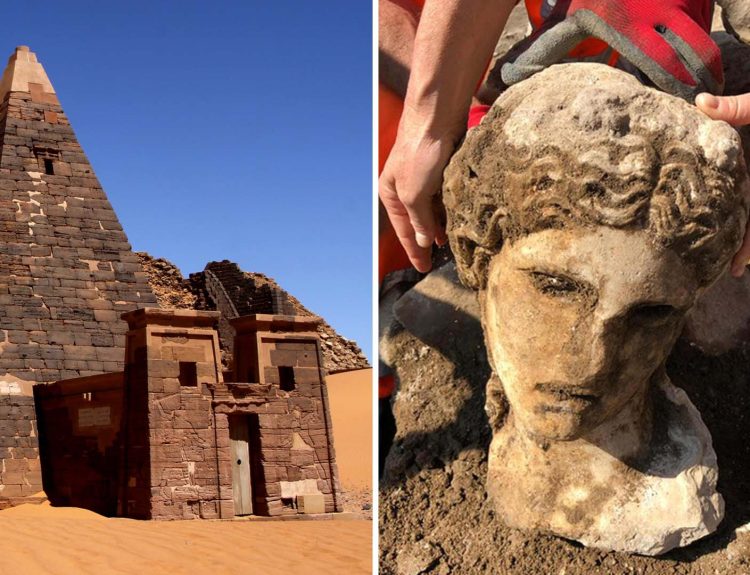Just when you think that the world has no more secrets of the past to share with people today, an archaeological dig somewhere unearths amazing relics of the past. That’s exactly what happened in 2023 … several times over!
Over the course of the year, researchers and archaeologists made some incredible discoveries that shine a light on ancient civilizations, mysterious artifacts, and long-forgotten treasures. Let’s take a look at 12 of the most exciting finds from 2023.
1. A Tenochtitlan Treasure
Archaeologist Leonardo Lopez Lujan and his team discovered a volcanic stone chest dating back to 1454 in the Templo Mayor, located at the center of Tenochtitlan. The Aztec chest, which was made during the time when Moctezuma I ruled, held a collection of ancient relics.
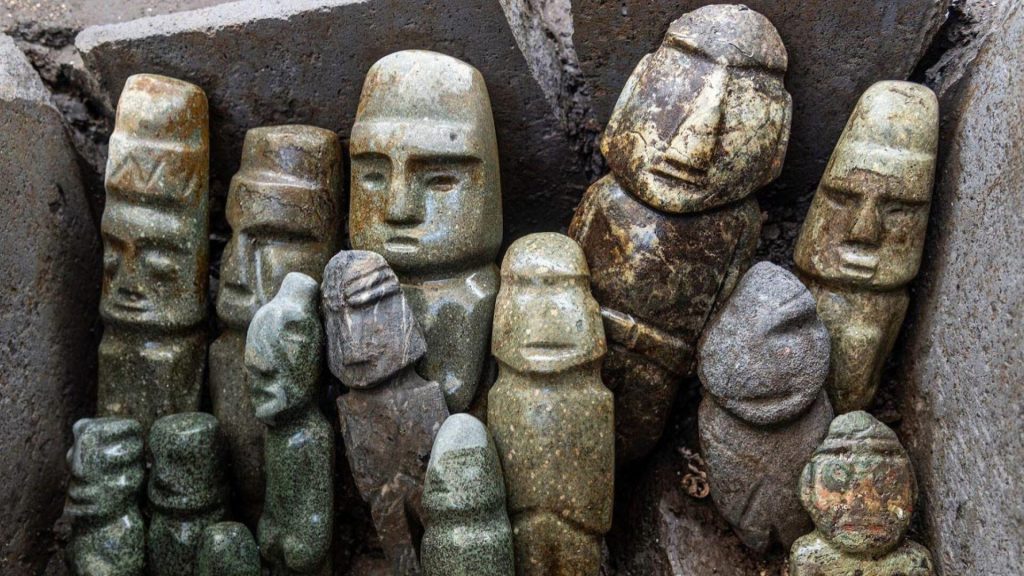
Fifteen figurines carved from serpentine and bearing symbols of fertility were found within the chest. Most astonishingly, the researchers found that these figurines were more than a thousand years old when they were placed in the chest and buried at the temple. The figurines were crafted between 500 BC and 680 AD by the Mezcala people.
2. A New Moai Statue Was Added to the Collection at Easter Island
In 2023, archaeologists revealed the discovery of a previously unknown Moai statue on the mysterious and remote Easter Island. More than 500 years ago, the indigenous Polynesian inhabitants of the island carved giant stone heads to serve as guardians over the island. Just how and why they carved these colossal statues remains a mystery … as does the method by which they moved and erected them.
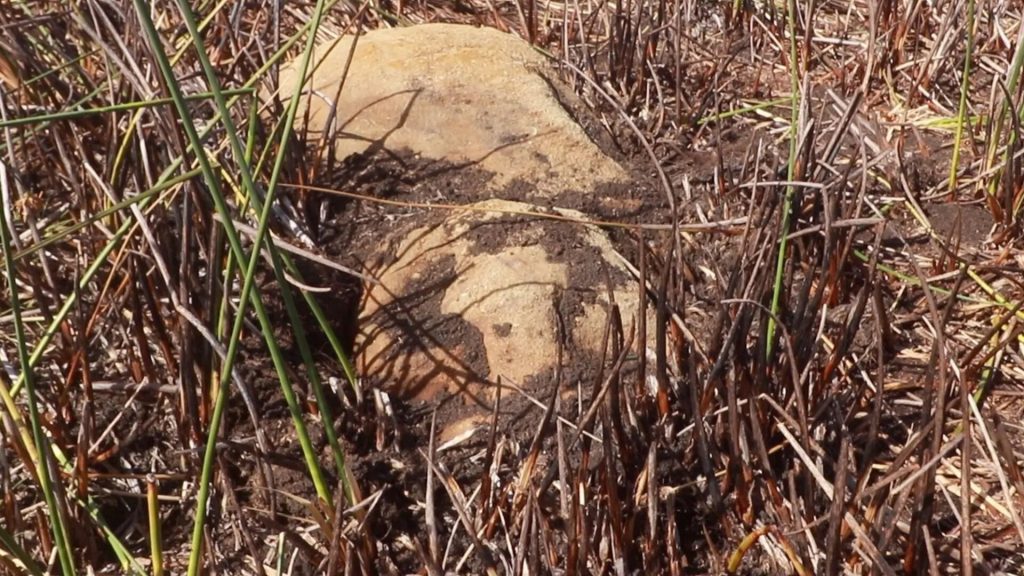
The newly discovered Moai statue was found in a dry lakebed several months after a volcanic eruption rocked the island. The eruption damaged some of the existing Moai statues, making the discovery of another one even more significant.
3. A Fragment of the Earliest Known Book Was Identified
Although the 10 by 6-inch papyrus fragment was discovered in 1902 at a site in El Hibeh, Egypt, it was meticulously studied by Theresa Zammit Lupi and a team of researchers from the University of Graz in 2023.

In examining this papyrus, Lupi realized that the paper had been folded in half and bound together with additional pages with tackets – akin to the ring binders we see today. The papyrus, which dates back to 260 BC, predates the first known books by more than 400 years, making it the earliest book ever found.
4. Hercules Hiding in a Sewer
Twenty-seven-year-old archaeologist, Federica Acierno made the discovery of a lifetime when she and her team found a life-sized marble statue of the legendary Hercules – complete with his iconic lion-skin headdress – in an unlikely place. It was found in the ancient sewers beneath Rome.
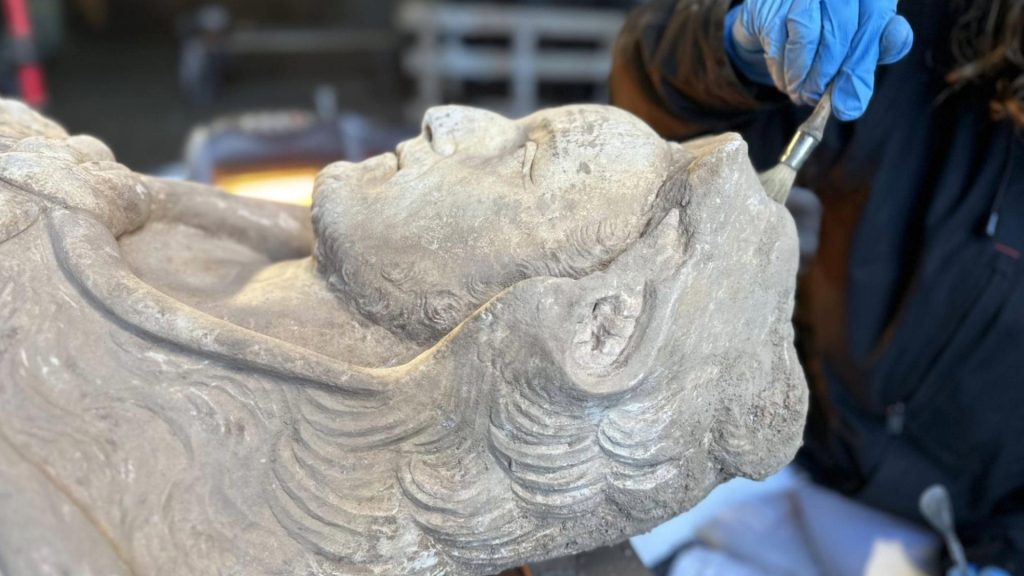
Oddly, it appears that the statue was intentionally hidden more than a century ago. It was discovered in a sewer pipe more than 65 feet below the streets of Rome. The face on the statue is strikingly similar to that of Roman Emperor Gaius Messius Quintus Traianus Decius, who reigned from 249 to 251. Was the statue linked to this short-lived ruler? We still don’t know the circumstances that led to its burial in the sewers.
5. “Buried Thunderbolts” Found at Sacred Spring
Both the Romans and the Etruscans believed the spring at Bagno Grande was a sacred place. In 2023, archaeologists discovered just how sacred it was. An excavation of the site revealed hundreds of votive offerings that were hidden under the terracotta tiles. The votives signified the ritual known as “fulgur conditum,” or “buried thunderbolt.”

Lightning must have struck the sanctuary at Bagno Grande in the first century AD. Following the lightning strike, which the people believed to be a sign from the heavens, they flocked to the site bearing votives which were sealed beneath the sanctuary to designate it as a sacred place that had been marked by the gods.
6. Odd Religious Paintings Were Found in a 16th Century Home in Sudan
Archaeologists from the University of Warsaw who were working in Old Dongola, the ruins of a town located in present-day Sudan, found a network of rooms beneath a 16th-century house. In one room, they came upon an odd collection of religious paintings.
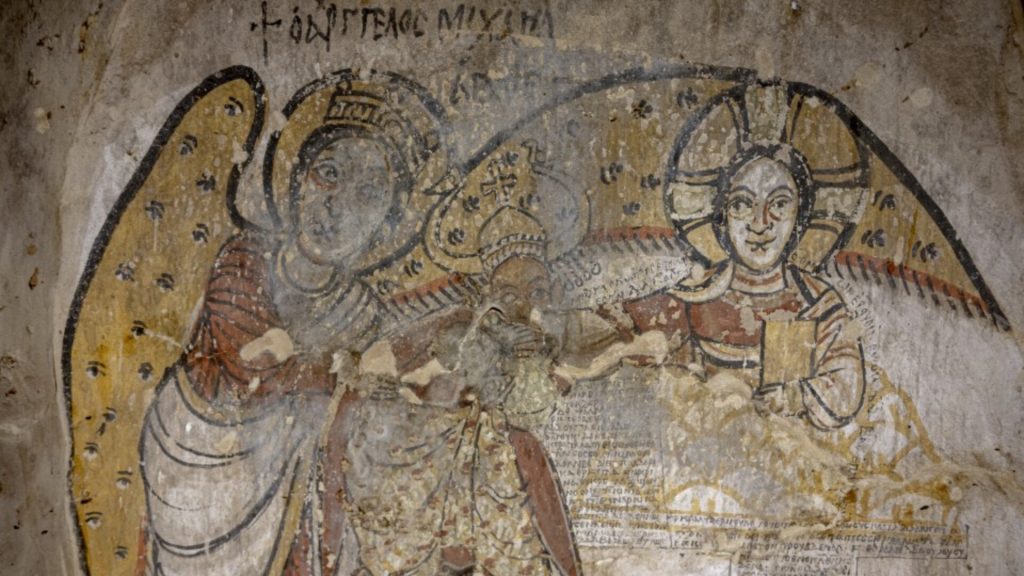
In one of the stranger pieces in the collection, which were painted in the 13th century, the unknown artist depicted the archangel Micheal cradling a Nubian king and holding him up to the heavens so Jesus could kiss his hand. According to Artur Obluski, one of the researchers on the team, the image may be the Nubian King David who, according to old Nubian writing, pleaded for divine intervention to save his city.
7. Evidence of a Mass Animal Sacrifice at Royal Burial Complex
Researchers working at a royal tomb complex dating from 206 BC to 9 AD made a significant discovery in 2023 that sheds light on the ancient Chinese burial rituals. The skeletal remains of more than 400 animals – all of which were ritually sacrificed and buried with the ancient Chinese rulers – were found.

Among the animal skeletons was the first intact and complete skeleton of a tapir and a giant panda to be found in China. In addition, the animals that were sacrificed included 41 rare species. The remains of a tiger, green peacock, snub-nosed monkey, yak, and red-crowned crane were all found at the site, which has been called the largest animal sacrifice in Chinese history.
8. A Keepsake Honoring the Marriage of Henry VIII and Katherine of Aragon Was Found
In 2023, a man went metal detecting to get his mind off the death of his dog made a remarkable find from the 16th century. He discovered a pendant that is a rare artifact associated with Katherine of Aragon. The pendant bears the date 1521 when King Henry VIII was married to his first wife, Katherine of Aragon.

The pendant has the image of a Tudor rose and a pomegranate bush – each a symbol of the couple’s families. There is an “H” and a “K” inscribed on the back of the pendent in a script common in the 16th century.
9. Researchers Located the Birthplace of Abolitionist Heroine Harriet Tubman
Working at a site in Maryland, a team of archaeologists have excavated the brick foundation of a home that once belonged to Ben Ross, the father of Abolitionist Harriet Tubman. The dig revealed several small artifacts, such as buttons, pottery fragments, and a West African spirit cache.
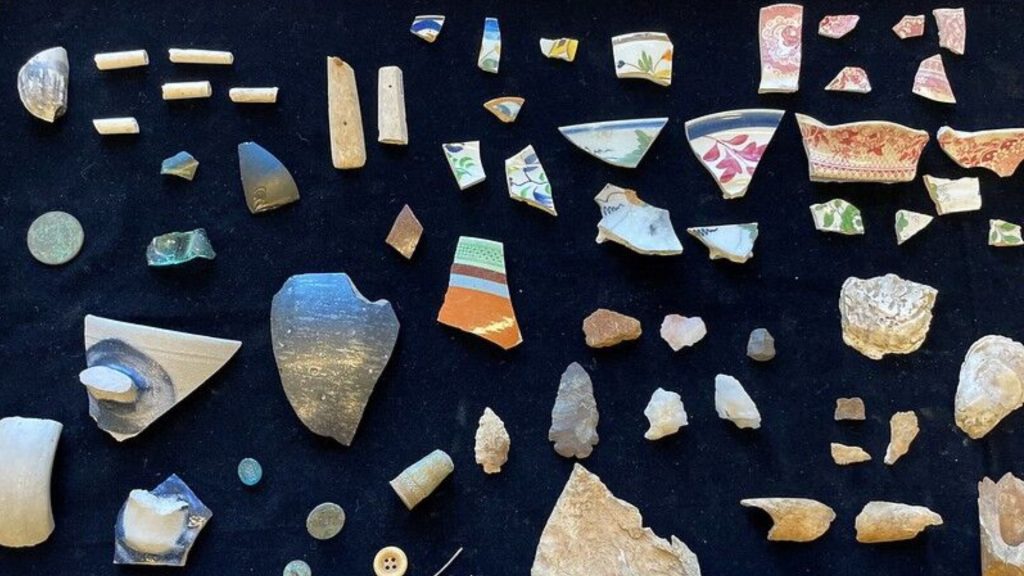
The artifacts add to the understanding of Tubman’s early years in slavery before she escaped and devoted her life to helping other slaves reach freedom via a secret network of safe houses collectively known as the Underground Railroad.
10. The Iraqi Sands Hid a Long-Lost Palace
Near the present-day city of Tello, Iraq, the desert sands revealed in 2023 that they had been hiding a secret for 4,500 years. Using drones and ground penetrating radar, archaeologists found the buried ruins of an ancient palace complex that was once part of the Sumerian city of Girsu.
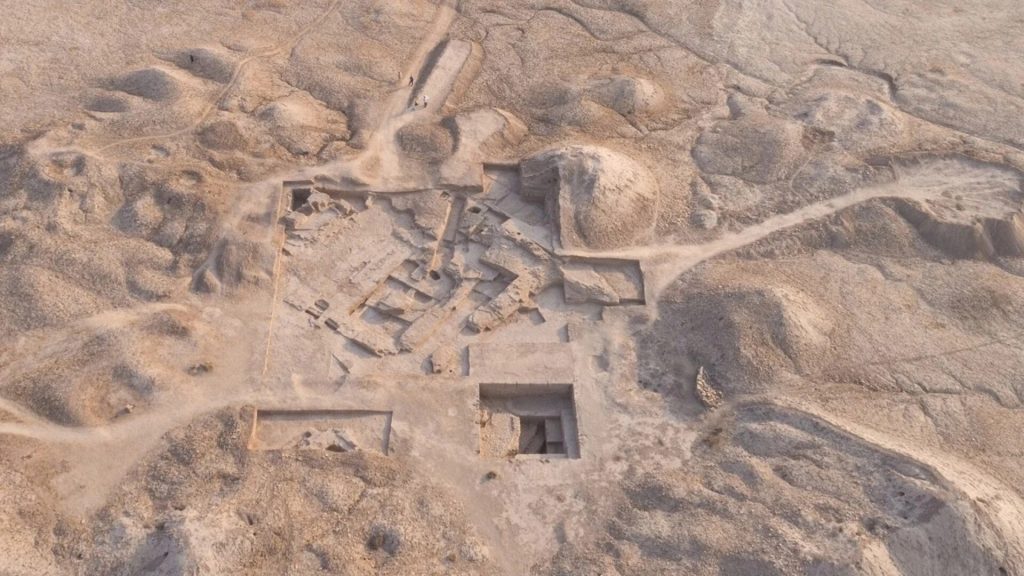
The long-lost palace was mentioned in ancient texts, however most historians believed it to be a mythical place. The discovery serves as a reminder that there may be important kernels of truth in ancient writings that should not be so easily dismissed.
11. An Ancient Ritual Complex Found in Peru Demonstrates the Rich History of South America
In 2023, archaeologists located a 1,200-year-old ritual complex at Pakaytambo in southern Peru. This structure was built by the Wari Empire who ruled over the region from the 6th to 10th centuries. It was found along an important ancient roadway through the Andean highlands.

The Wari Empire’s territory was vast and encompassed diverse geographical terrain. The network of roads linked the various population centers. This ritual complex included a massive platform and stone walls. It represents South America’s rich and complex Pre-Incan history.
12. The Oldest Neanderthal Cave Art Was Found in a Sealed French Cave
A portion of La Roche-Cotard cave, located in France’s Loire Valley, has been sealed off for more than 57,000 years. So, when archaeologists breached the cave in 2023, they were stunned to find ancient Neanderthal cave art gracing the walls. The drawings – a series of wavy lines and dots – are the oldest identified Neanderthal art in existence.

The art is arranged into eight panels, but its meaning remains a mystery. The finding provides more information about our ancient cousins, their societies, and the fragility of our own existence.

